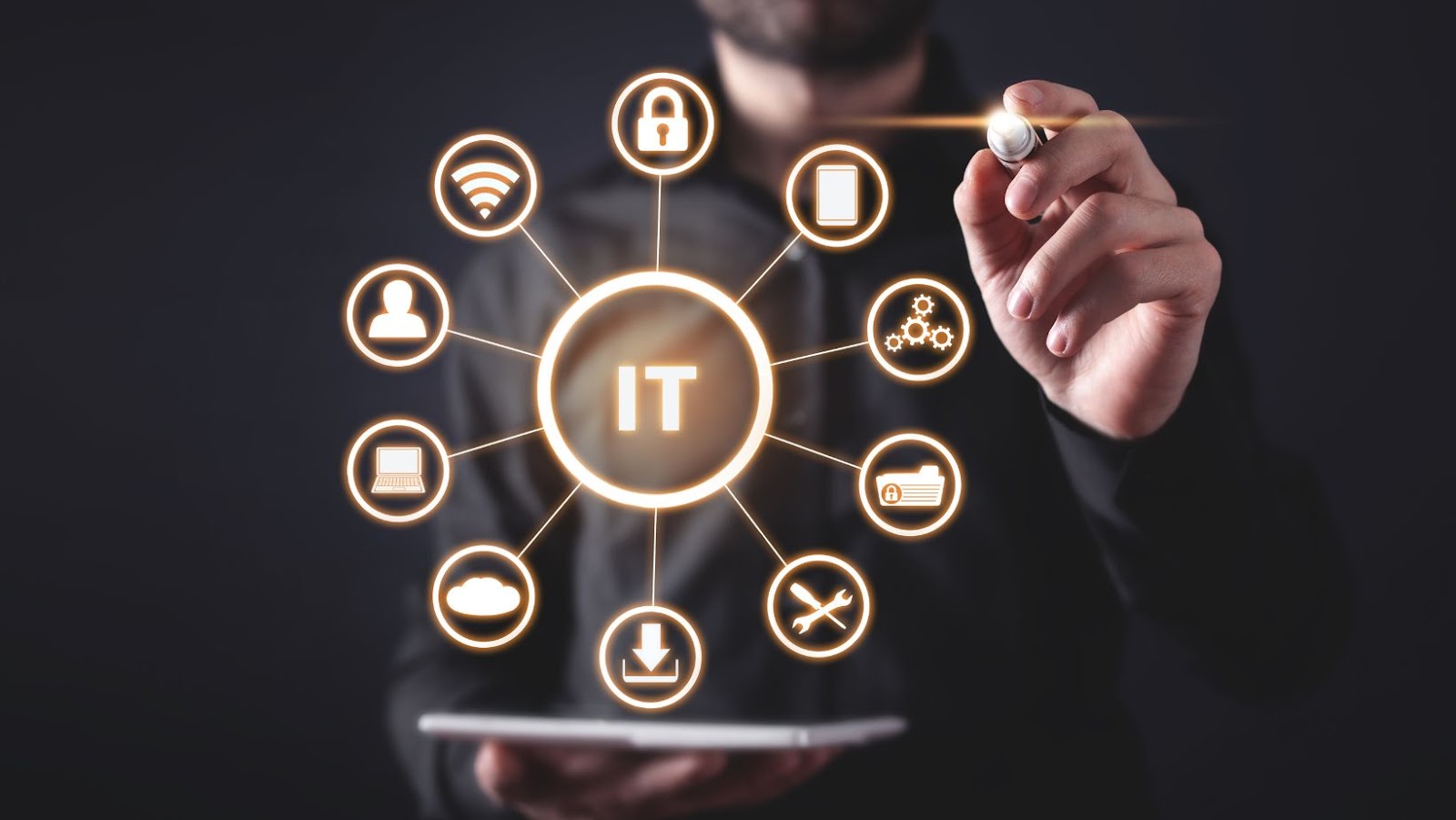Telecommunication companies have always been a significant target for hackers, as they provide an entry point into virtually every aspect of the communication technology we use today. However, the complexity and rapid pace of advances in communication technology over the past two decades have made telecommunications networks more vulnerable to cyber-attacks.
This article will explore some of the reasons why telecom companies are generally more susceptible to hacking, as well as what measures may be taken to protect their networks and customers from potential attacks:
Hackers are targeting telecom companies to steal 5G secrets
As the race to develop 5G technology accelerates, telecom companies have become an increasingly attractive target for hackers. 5G technology has the potential to revolutionise the way businesses and people communicate, which has made it an attractive commodity for cybercriminals. With the rise of 5G technology, the threat of cyber attacks has drastically increased, and telecom companies must take steps to protect their network security.
In this article, we’ll explore why telecom companies are becoming a target for hackers, and how they can protect their networks:
The Impact of 5G on Cybersecurity
The introduction of 5G technology has posed a new threat to telecommunications. This next-generation network promises faster speeds and a significantly wider range of applications, such as integrated Industrial Internet of Things (IIoT) networks, virtual reality systems, connected cars, and autonomous drones. Unfortunately, this increased connectivity comes at a cost: without the right security measures, it presents an alluring target for malicious cyber attackers.
Recent research indicates that this threat is expanding across industries as telecom companies are now believed to be the most targeted sector for cyber attacks. A survey by EY shows that 40 percent of attackers prioritize telecoms and media companies over other sectors when launching cyber attacks. As the survey’s respondents noted, the proliferation of 5G technology has led to increased malicious activities directed at telecom networks like distributed denial-of-service (DDoS) attacks and data breaches. Other targets may include personal customer data stored by service providers or third parties with access to such data.
To better protect their networks from these threats, telecom companies must implement advanced security practices such as:
- Identity authentication
- Multi-factor authentication protocols
- Threat intelligence monitoring systems
- Network segmentation protocols
However, even with all these security measures in place, hackers can still target customer devices to gain insider access or malware injection that occurs when downloading applications or other digital content onto their phones or devices connected via wireless home networks. Therefore, telecoms must continue to stay vigilant while they expand their 5G networks worldwide to protect customers from any attack on its network infrastructure.
The Rise of Sophisticated Cyber Attacks
As technology is developing and becoming increasingly interconnected, the sophistication of cyberattacks is also on the rise. As more and more businesses come online, hackers are finding ways to access big data stores, networks, and even government systems.
Telecom companies are particularly vulnerable targets, because they’re often the core elements of modern communication networks. They host, process, route and deliver large amounts of sensitive data – from personal information like credit card numbers and employee records to entire communication infrastructures for governments or military networks.
Hackers can hijack telecom systems to gain access to what these companies offer: Access that wasn’t previously possible even a decade ago. Hackers using advanced techniques can use this method to launch Distributed Denial-of-Service (DDoS) attacks that overwhelm networks with massive amounts of traffic or data requests. This can cause operating systems and other infrastructure components to crash or be locked up by malicious code – making it impossible for users or organisations to access the company’s services until the attack is resolved.
Other sophisticated cyberattacks involve exploitation of gaps in corporate security policies. For example, corporations may become victims of phishing emails from seemingly legitimate sources containing malicious code, allowing hackers full administrative control over their entire network infrastructure. Unsuspecting users click malicious links in these emails or install suspicious software and open portals for malware infiltration into a company’s resources. The result can be catastrophic – loss of sensitive information, disruption of business operations, stolen mass user data or exposed confidential documents leading to economic losses.
Keeping ahead of these rapidly evolving cyberattack threats requires comprehensive monitoring tools connected with detailed analytics on attack trends combined with robust security protocols performed regularly by IT security personnel within all corporations vulnerable to such attacks. The goal should be consistent detection and prevention capabilities as attackers search out unprotected endpoints within network infrastructures, allowing them entry points into critical systems.
Why Telecom Companies are a Target
In recent years, telecom companies have become a prime target for hackers. With the introduction of 5G technology, telecom companies are now more vulnerable than ever. Hackers are breaking into telecom companies’ networks to gain access to proprietary information and then selling it on the dark web. They are also looking to steal secrets related to 5G technology to exploit it for their gain.
This article will discuss why telecom companies are being targeted by hackers and what measures can be taken to protect their networks:
Increased Access to Sensitive Data
Telecommunications companies are a major target for malicious hackers due to the sheer amount of sensitive data stored within their databases. In addition to the usual customer data, many telecom companies store and process highly confidential information, such as phone records, account histories and financial information. This presents a significant security risk if not properly managed or secured.
Hackers are also attracted to telecom providers because they often have large amounts of stored user information all in one place, making them a prime target for large-scale data breaches. In addition, attackers can use malicious software or phishing tactics to access customer credentials or payment information. These attacks can damage the reputation of the telecom giant and lead to huge monetary losses due to stolen money or liability claims filed against them by customers whose personal information was compromised during the attack.

To protect themselves and their customers from cyber-attacks, telecom companies must focus on implementing advanced cybersecurity measures such as two-factor authentication, encryption technologies and threat detection systems. By taking these steps, telecommunications companies can help ensure that their networks are secure from potential attackers looking to access sensitive data for personal gain.
Access to 5G Network Infrastructure
Telecom companies are increasingly becoming a target for hackers due to their access to the 5G network infrastructure. The 5G networks are the latest generation of cellular networking, providing people with faster data speeds and more reliable connections. As a result, these networks offer an attractive target for malicious actors, as they could potentially gain access to user data or cause disruptions in someone’s service.
Due to this, telecom companies are consequently targeted for their networks, as malicious actors look for new ways to exploit vulnerabilities to either steal user data or disrupt service. For instance, organisations have noticed that wireless carriers have significantly increased customer data breaches since the onset of 5G technology. Furthermore, reports indicate that cyber criminals have successfully breached organisations within these highly protected spaces and that mobile operators were among their targets. As such, telecom companies must prioritise their IT security and take the necessary measures against potential intruders looking to exploit any weaknesses to gain access to sensitive customer information or disrupt services.
To protect themselves from any potential threats posed by hackers seeking access into their comprehensive 5G networks, telecommunications companies must ensure that all aspects of its IT infrastructure – internally and externally – are secure and compliant with industry-standard best practices. For example, companies should consider investing in two-factor authentication systems and additional layers of encryption on both front-end applications and back-end databases. Furthermore, firms need to conduct regular risk assessments on their IT systems and ensure that employees are aware of the risks posed by hacked devices and services so that they can make informed decisions when it comes to securely utilising those devices or services.
The Risks of Cyber Attacks
In today’s digital world, cyberattacks are becoming an increasingly big threat to businesses, as hackers continue to target companies to steal valuable data and secrets. This is especially true for telecommunications companies, who have become a prime target of hackers due to the sensitive 5G technology they are developing.
In this article, we’ll look into the risks of cyberattacks for telecom companies and strategies for keeping data secure.
Financial Losses
The financial losses associated with cyberattacks against telecom companies can be costly and long-lasting. According to a 2015 report from the Ponemon Institute, the average total cost of data breaches for telecom businesses was $5 million. The costs come from investigating and remediating the attack and potential business losses due to customer churn, reputational damage, or litigation stemming from an attack.
The primary cause of financial losses due to cyberattacks is intellectual property (IP) theft. Hackers can gain access to a company’s confidential data or sensitive customer information and use it for their benefit. This data can be sold on the dark web or used by hackers to extort companies for money. In addition, competitors can use stolen IP to gain an edge over telecom business by replicating their services or products without incurring research and development costs.
Another issue is denial-of-service (DoS) attacks designed to disrupt a company’s operations by overwhelming its system resources via malicious requests or traffic. DoS attacks usually don’t involve stealing any data. Still, they can cause major service disruption costing time and resources that would have otherwise been devoted towards productive activities to resolve the issue.

Telecom companies have taken several measures in order protect themselves from cyberattacks such as:
- Implementing strict security protocols that monitor user activity.
- Encrypting customer information transacted over public networks.
- Conducting regular security reviews.
- Providing training on cyber security awareness and best practices among employees working on mission-critical systems.
Reputational Damage
Cyberattacks also damage telecom companies’ reputation, which can be almost impossible to repair. When a breach occurs, customers and investors may become uncertain about the company’s security protocols, leading to a decline in trust. Companies may try to implement new security measures or hire cybersecurity experts, but ultimately these efforts don’t always lead to improved perceptions.
Furthermore, reputation damage is one of the most difficult forms of financial loss to accurately measure. Stolen customers and lost business opportunities are easy enough to denote – but when public perception is hurt in an intangible way, it can take much longer for companies to piece together what happened and attempt any form of recovery. To make matters worse, telecom companies and other industries have seen more professional hacking groups targeting them and executing attacks with political or corporate agendas. This adds increased complexity when understanding the motives behind individual attacks.
Hackers use techniques such as malware, phishing emails/texts, ransomware and Denial-of-Service (DoS) attacks which can all cause significant reputational damage. In addition, the aftermath can be costly with customers expecting more transparency and accountability after realising the full scope of their data being compromised or leaked – resulting in huge losses for companies, including emotional and monetary damages.
Loss of Customer Confidence
The telecommunications industry is a primary target for hackers and cyber criminals because of the vast amounts of customer data that is held. In addition, the potential financial costs, or fines, resulting from customer data breaches can be devastating for telecom companies.
There is also the risk of a significant loss of trust when customers lose confidence in the security measures and protocols used by the company. As a result, customers may become unwilling to give any more information to the company, or may even cancel their services entirely when a severe breach occurs.
Telecom providers who have experienced customer data breaches may have to go beyond making statements about protecting customer privacy and begin actively proving their dedication to enhanced network security, such as by:
- Investing in secure technologies
- Enacting stringent regulations regarding customer data access for employees
Taking proactive measures in this way not only helps reduce risk but can also help build customer trust and loyalty.
How Companies Can Protect Themselves
Telecom companies are increasingly becoming targets of hackers looking to steal confidential data and exploit 5G secrets. With the heightened risk of data breaches and cyberattacks, companies must take proactive measures to protect themselves.
In this article, we will discuss some of the steps companies should take to ensure their data is secure and protected from malicious actors:
- Implement strong authentication protocols.
- Encrypt data at rest and in transit.
- Conduct regular security assessments.
- Use a secure firewall.
- Monitor user access and activity.
- Ensure proper patch management.
- Train employees on security protocols.
Adopt a Comprehensive Cybersecurity Strategy
Digital networks are not only complex, but they are vulnerable to a wide range of ever-evolving cyber threats. As such, telecom companies must invest in the right combination of technology and processes that help prevent malicious data breaches and protect customers’ private information.
Companies should start by covering the basics: having reliable anti-malware software, firewalls, and virtual private networks (VPNs) installed and maintained properly.
Then telecom businesses need to go one step further, implementing more advanced solutions like behaviour analytics monitoring for real-time detection of threats. Additionally, companies should consider threat intelligence services that can alert organisations about interactions with any malicious IP address or domain activity and ongoing penetration testing to discover security weak points before attackers can take advantage of them.

Moreover, companies should also ensure all employees are trained on best practices for remaining secure online – from using strong passwords to patching systems regularly with the latest updates. And lastly, having an incident response plan (IRP) is essential if a potential cyber attack is detected; this outlines step-by-step procedures on how to respond quickly and effectively – containing any breach before it becomes worse – while signalling defenders when activities deemed ‘suspicious’ are taking place.
Implement Multi-Factor Authentication
Multi-Factor Authentication (MFA) is an essential security measure for telecom companies that use the internet to manage their customers and operations. With MFA, a user must present two or more authentication tokens of a different type, such as passwords, biometrics, smart cards, and soft tokens to access protected resources. This additional layer of security helps protect corporate data from malicious attacks or unauthorised access from the outside.
Using Multi-Factor Authentication is an effective way for telecom companies to secure user accounts and prevent hackers from gaining access. Two-factor authentication requires users to enter a username and password and another form of authentication—usually fingerprints or facial recognition. Multi-factor authentication adds precaution by requiring more than one form of verifying identity before granting access to protected resources. And, with multi-factor authentication solutions tailored specifically for telecom companies, like those offered by FIDO certified providers like Symantec and Microsoft Azure Active Directory, organisations can enjoy secure solutions that are scalable and cost effective when it comes to protecting their valuable customer data.
By implementing MFA throughout their organisation, telecom companies can guard against potential security breaches caused by phishing attacks or malware infiltration that can lead to unapproved access into corporate networks. Without this extra layer of security, hackers or other malicious actors may be able to gain unauthorised access easily if even one point of entry is vulnerable. In addition, by ensuring multiple factors in place for each user’s identity verification process, you are helping your company stay ahead of cyber threats and protect your organisation’s most important assets: its customers and data.
Monitor Network Activity
Due to the confidential nature of their data and customer’s personal information, telecom companies are often targeted by hackers. To safeguard themselves and their customers, telecom organisations should become proactive in developing strategies to detect and stop any malicious activities or attempts at security breaches as early as possible.
One way to do this is by closely monitoring network activity. This involves constantly evaluating system logs for suspicious activity, monitoring firewall traffic for unusual patterns, and scanning any received attachments or communications for viruses or malicious content. In addition, it is important to keep application security up to date to ensure outdated applications are not susceptible to attack.
Telecom organisations should also use intrusion detection system (IDS) technology to identify any attempts at unauthorised access or misuse of the system. In addition, deploying a uniform policy throughout the organisation can reduce risk and develop processes that regularly promote employee security awareness.
Furthermore, it is essential for telecom organisations to maintain updated disaster recovery plans that provide effective data protection so that sales and other operations can keep running even if something does go amiss due to a cyber attack.


More Stories
Exploring the Mind of A Poker Player: Becoming An Expert by Understanding Human Behavior
The Importance of General Atlantic’s Climate Solutions Fund
How will this acquisition impact Zynga’s competitors?